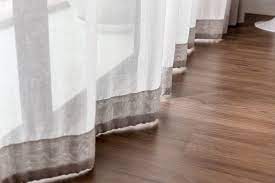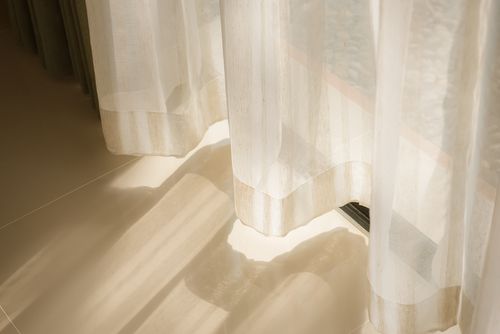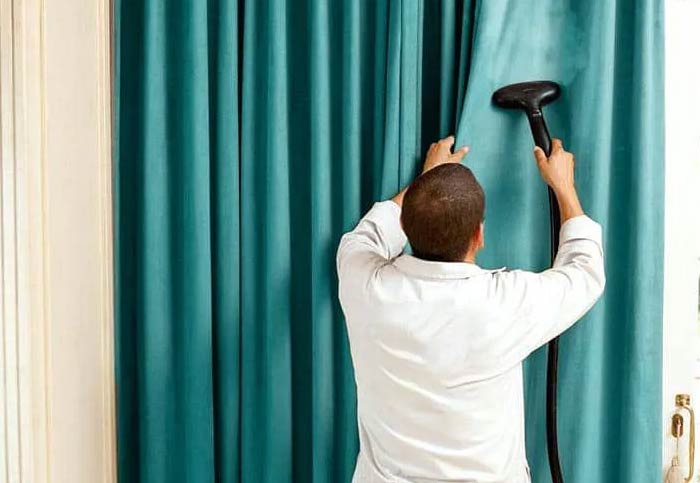Curtains play a significant role in enhancing the aesthetic appeal of any living space. They not only provide privacy and control over natural light but also contribute to the overall ambiance of a room. Over time, however, curtains can accumulate dust, dirt, allergens, and even stains, which can dull their appearance and impact the indoor air quality. This is where Curtain Steam Cleaning comes into play, offering power to revitalize your space and bring back the charm of your curtains.
The Importance of Clean Curtains
Before delving into the intricacies of curtain cleaning, let’s highlight why it’s essential to keep your curtains clean:
- Aesthetic Appeal: Clean curtains can instantly brighten up a room, making it look fresher and more inviting. On the other hand, dirty and dingy curtains can significantly detract from the overall visual appeal of your space.
- Health and Hygiene: Curtains are prone to collecting dust, pollen, pet dander, and other allergens. Regular cleaning can help improve indoor air quality, especially for individuals with allergies or respiratory issues.
- Prolonged Lifespan: Dust particles and dirt can gradually wear down the fabric fibers of your curtains, leading to premature deterioration. Proper cleaning can extend the lifespan of your curtains, saving you money in the long run.
- Odor Control: Curtains can absorb odors from cooking, smoking, and other sources. Cleaning helps eliminate these odors, keeping your space smelling fresh.
Expert Curtain Cleaning Techniques
While regular vacuuming and occasional shaking can help to some extent, professional curtain cleaning techniques go a step further in ensuring a thorough and effective cleaning process:
- Dry Cleaning: Dry cleaning is a popular method for cleaning curtains made from delicate or non-washable fabrics. It involves using solvent-based solutions that dissolve and lift away dirt and stains without exposing the fabric to excessive moisture.
- Steam Cleaning: Curtain steam cleaning, also known as hot water extraction, is suitable for curtains made from washable fabrics. It uses hot water vapor and mild detergents to break down and remove dirt, allergens, and stains. This method is effective in deep-cleaning and sanitizing curtains.
- Ultrasonic Cleaning: Ultrasonic cleaning is a gentle and thorough technique that involves immersing curtains in a special cleaning solution and subjecting them to high-frequency sound waves. These waves create microscopic bubbles that implode, dislodging dirt particles from the fabric’s fibers.
- Professional Hand Cleaning: For delicate or antique curtains, professional hand cleaning may be recommended. This method involves carefully hand-washing the curtains with mild detergents to preserve their integrity.
DIY vs. Professional Cleaning
While some homeowners might consider DIY curtain cleaning, it’s important to recognize the benefits of professional services:
- Expertise: Professional cleaners are trained to identify different fabric types and tailor their cleaning methods accordingly, ensuring optimal results.
- Equipment: Professional cleaning companies possess specialized equipment and cleaning solutions that may not be available for household use.
- Time and Effort: Curtain cleaning can be a time-consuming task, especially for larger curtains. Professional cleaners can save you time and effort, allowing you to focus on other aspects of your life.
- Prevention of Damage: Improper cleaning techniques can lead to fabric damage, color bleeding, or shrinkage. Professional cleaners have the experience to prevent such mishaps.
Conclusion
Curtain cleaning is a vital aspect of maintaining a fresh and inviting living space. By understanding the importance of clean curtains and the variety of expert cleaning techniques available, you can make an informed decision on how to best revitalize your space. Whether you opt for dry cleaning, steam cleaning, ultrasonic cleaning, or professional hand cleaning, the goal remains the same: to breathe new life into your curtains and enhance the beauty and comfort of your home.
Read More: How to Handle Smelly Curtains?
![]()


